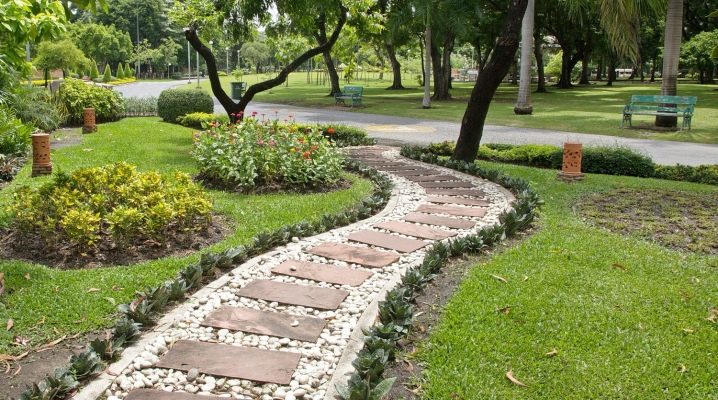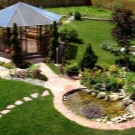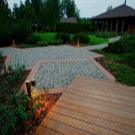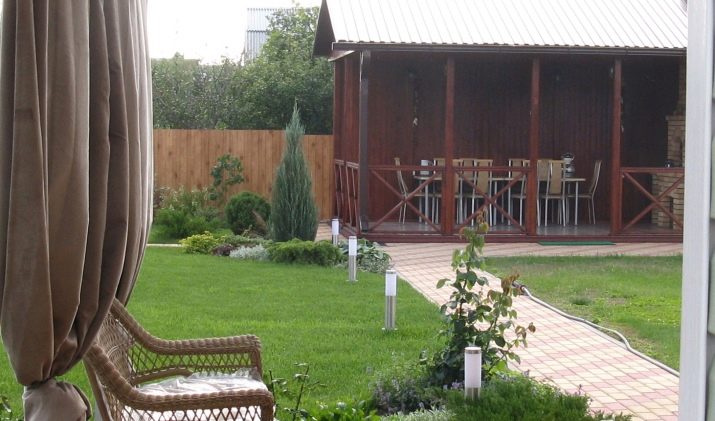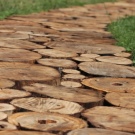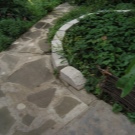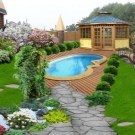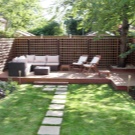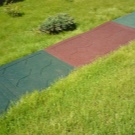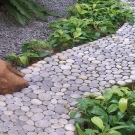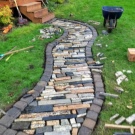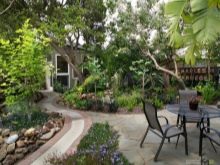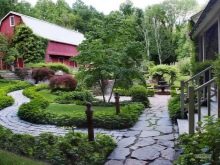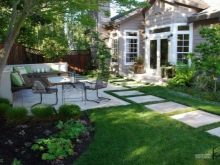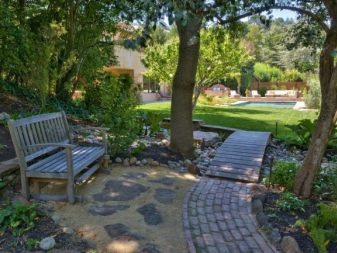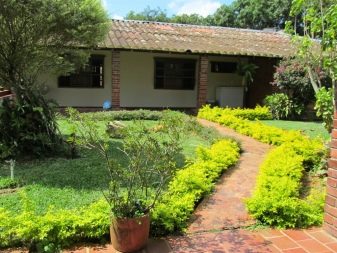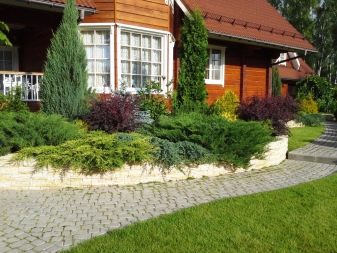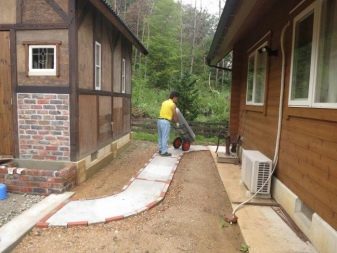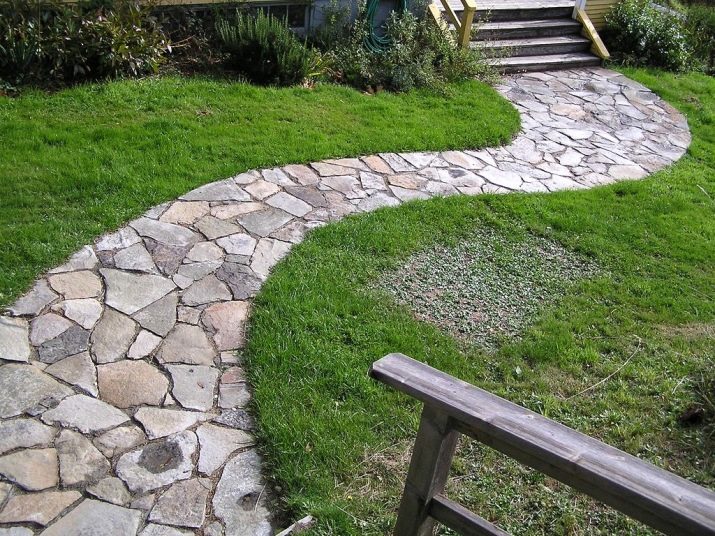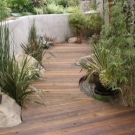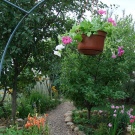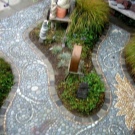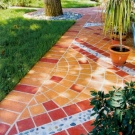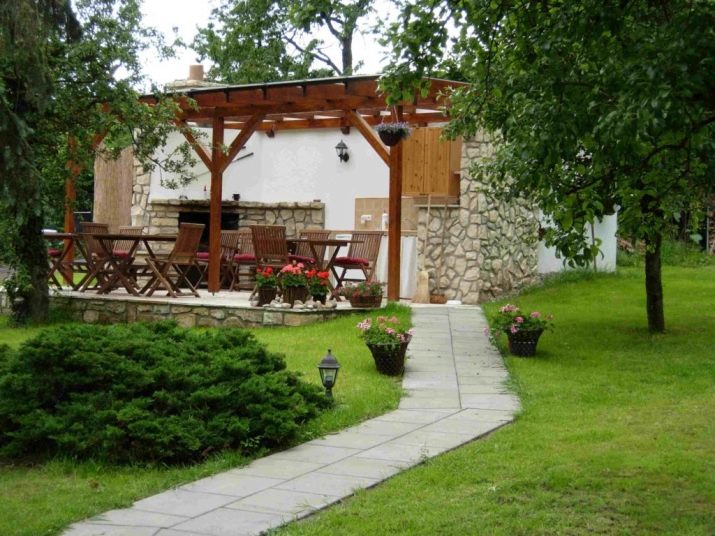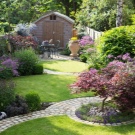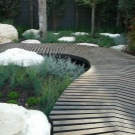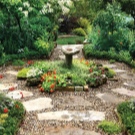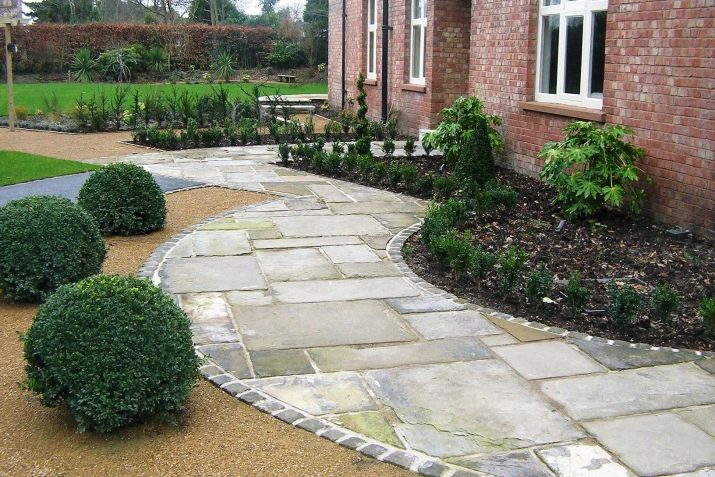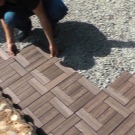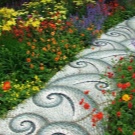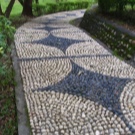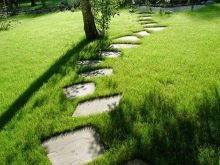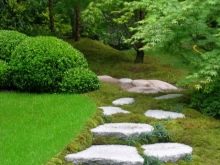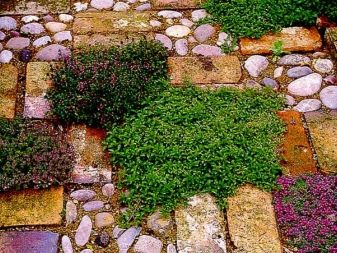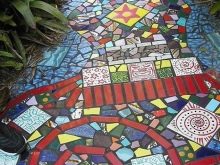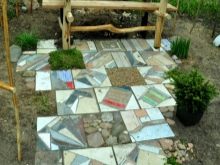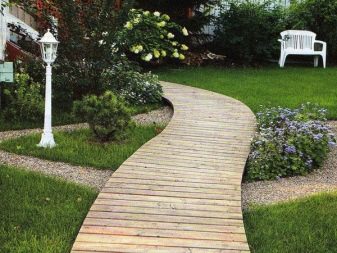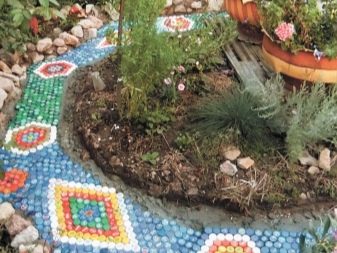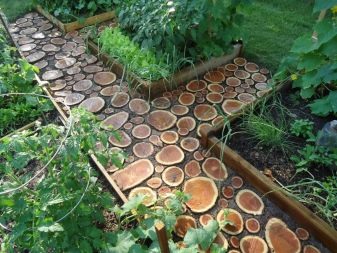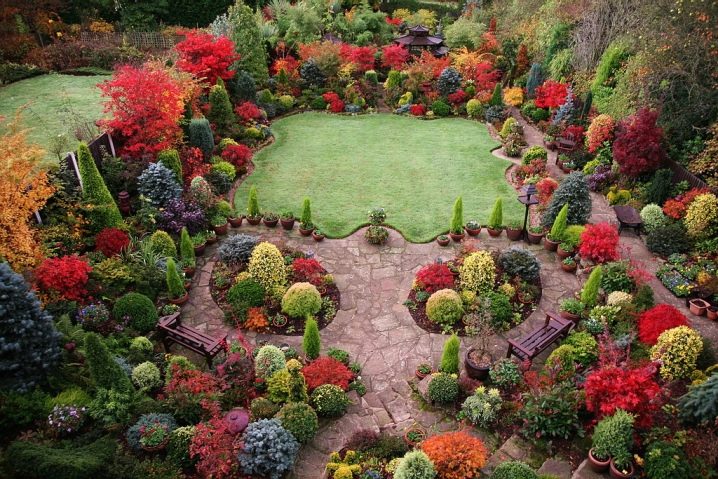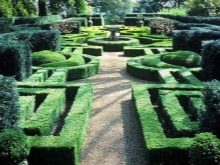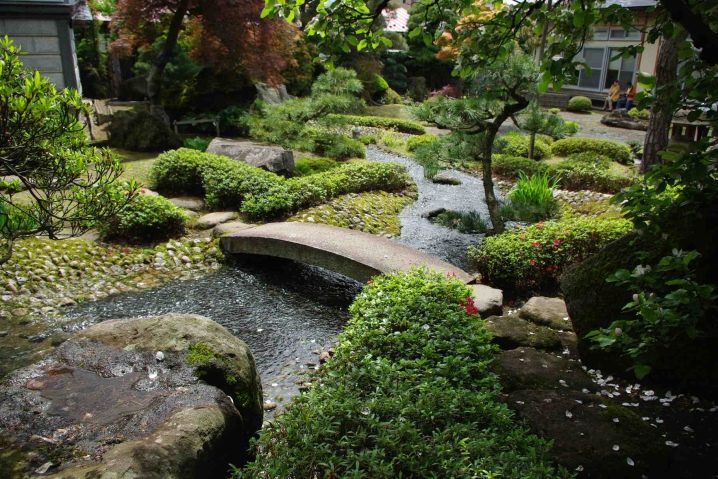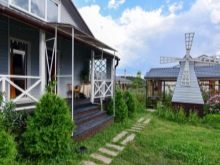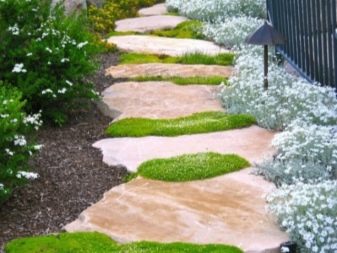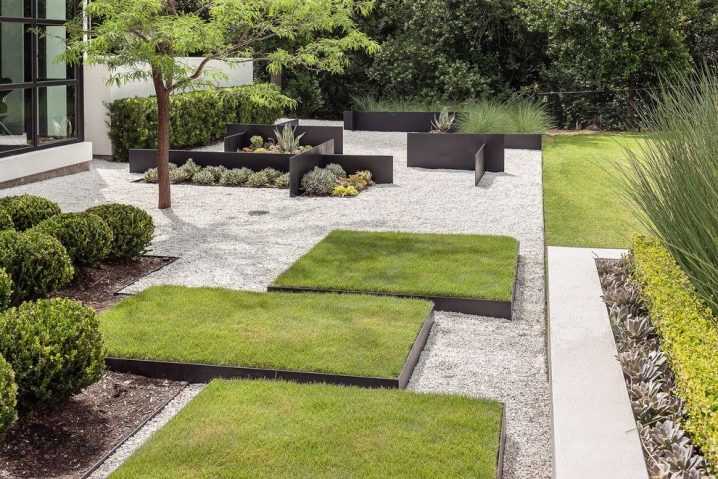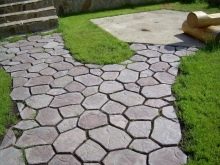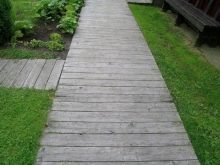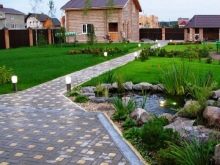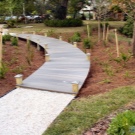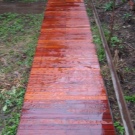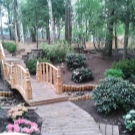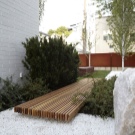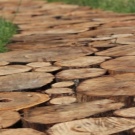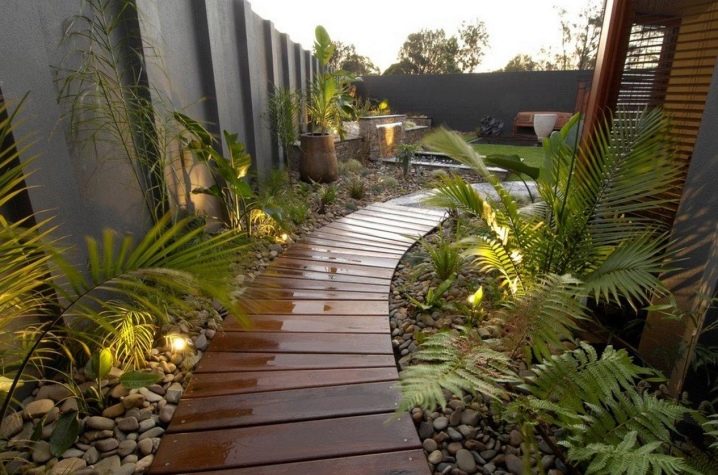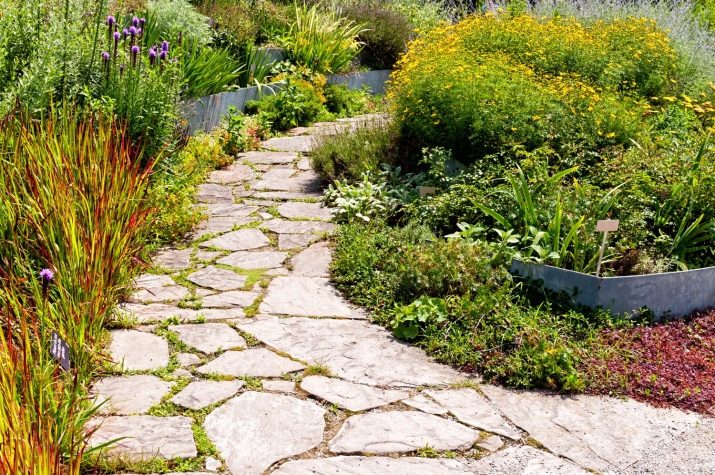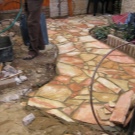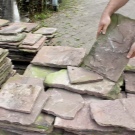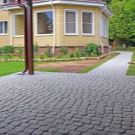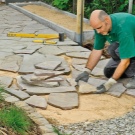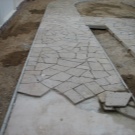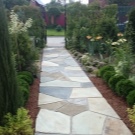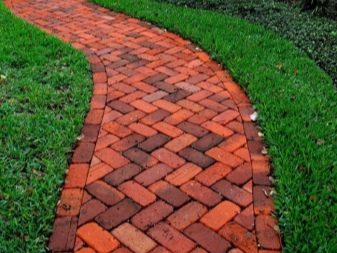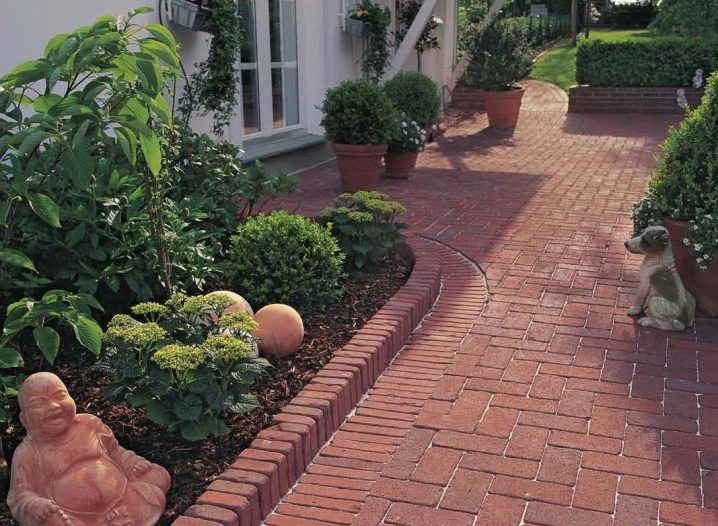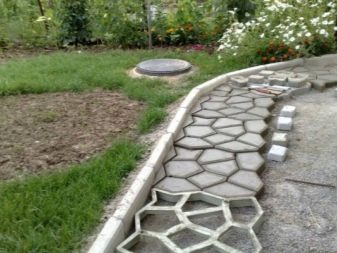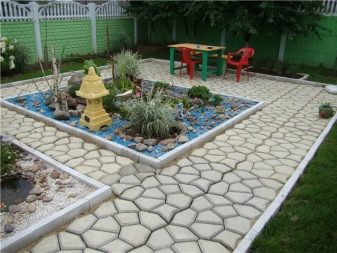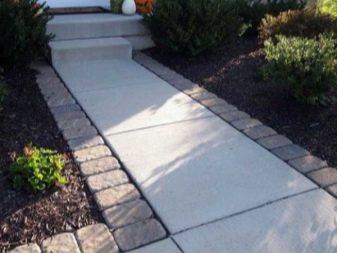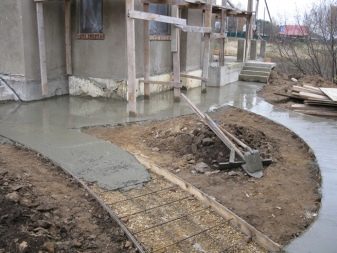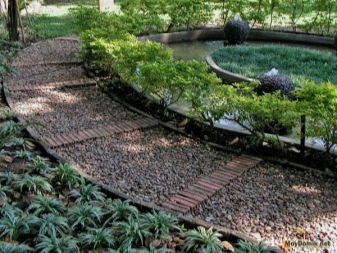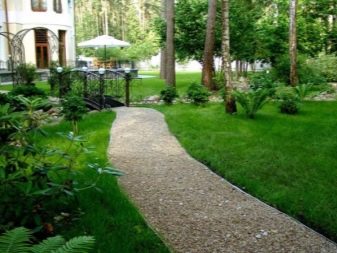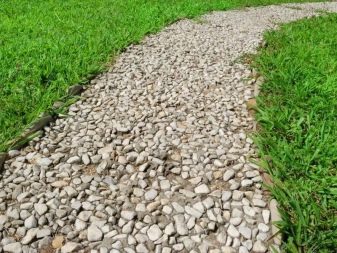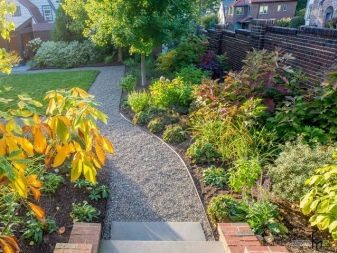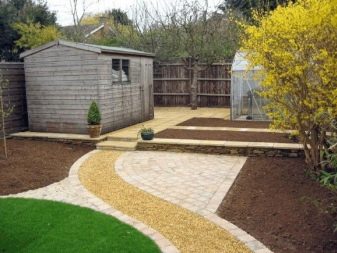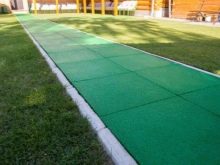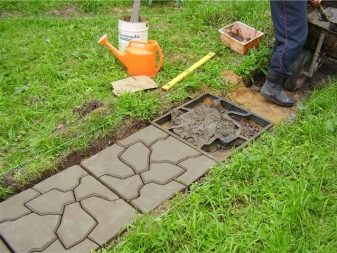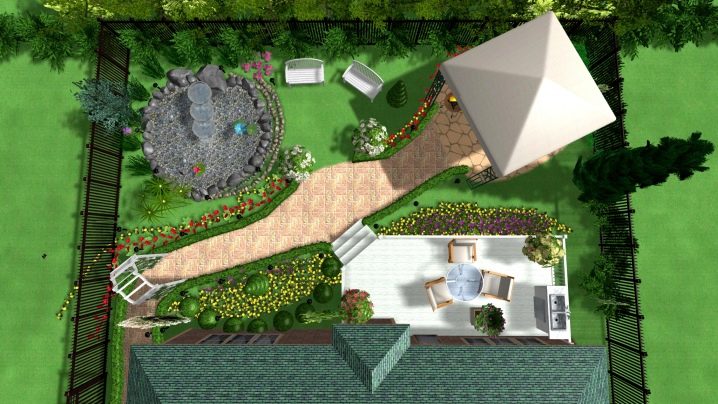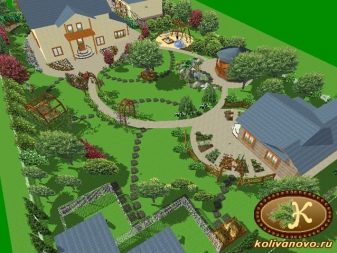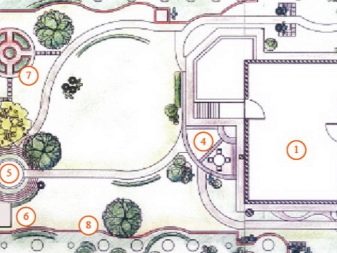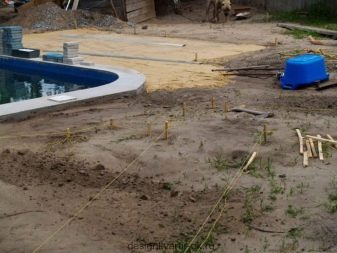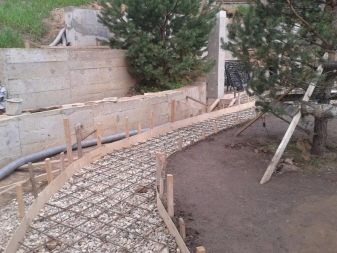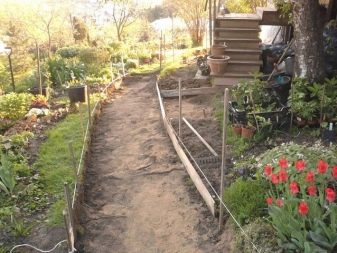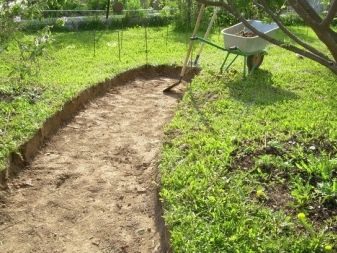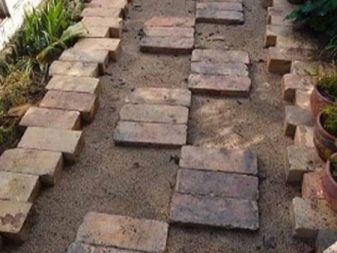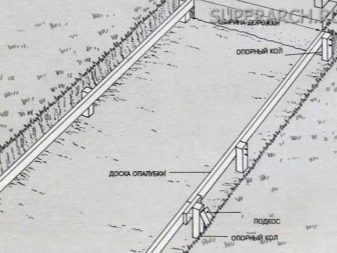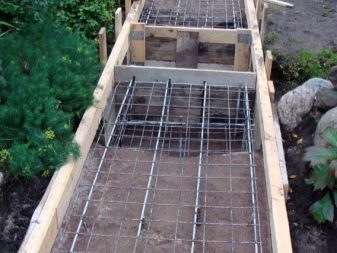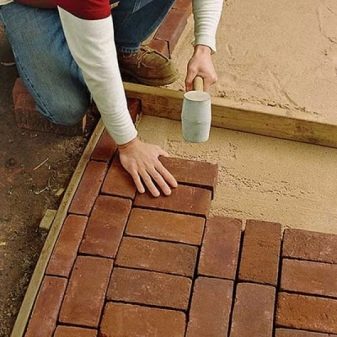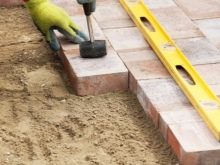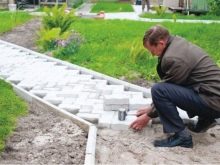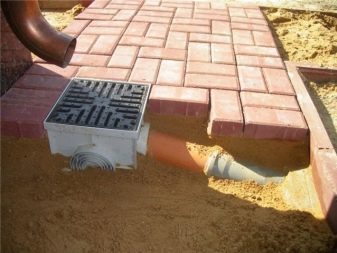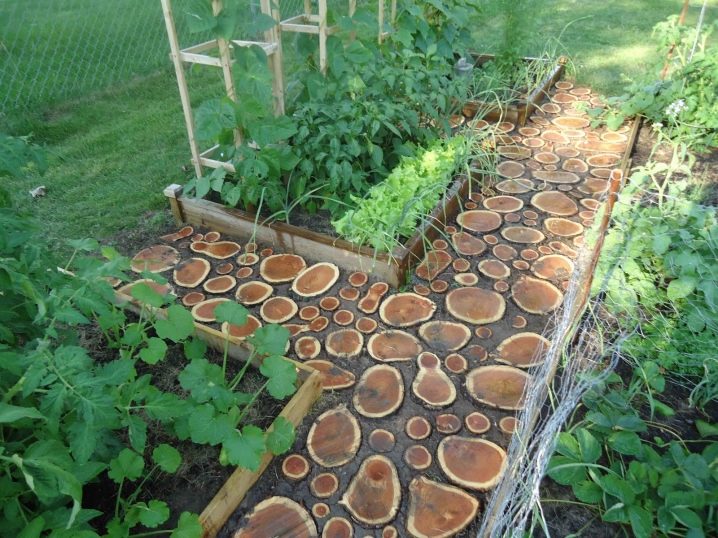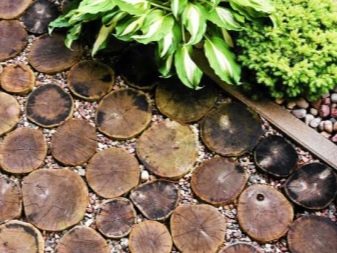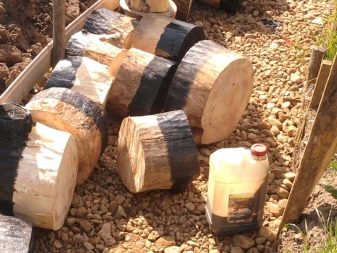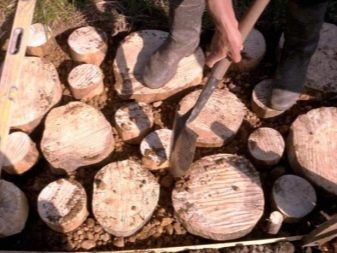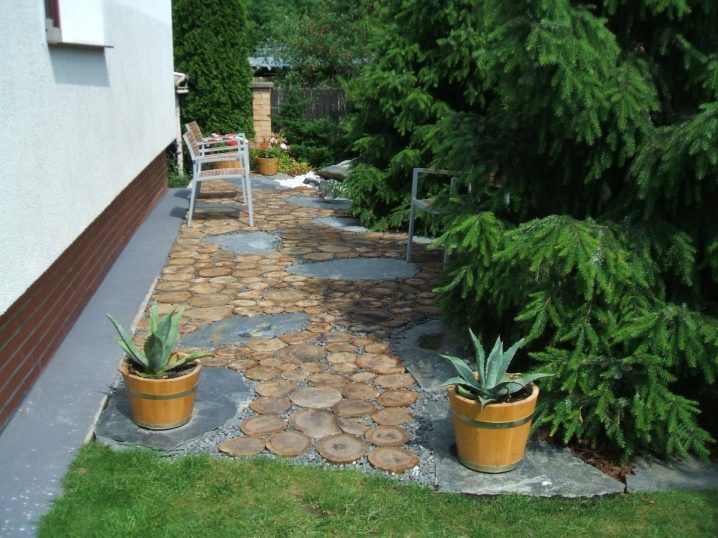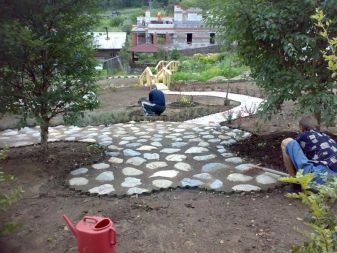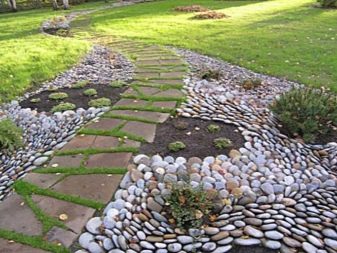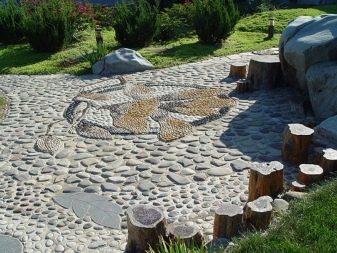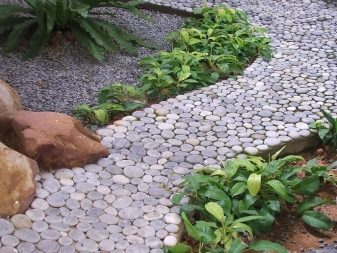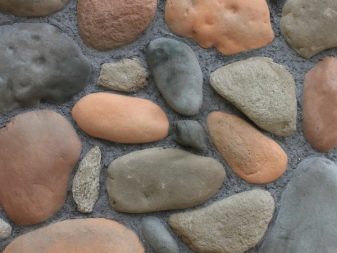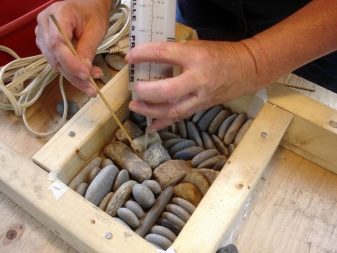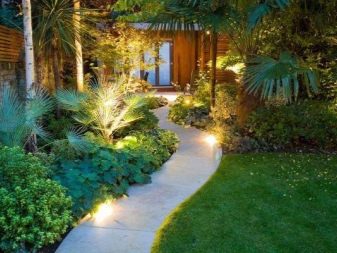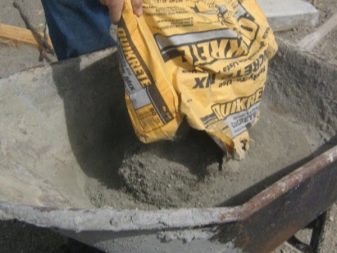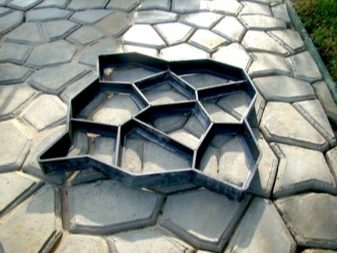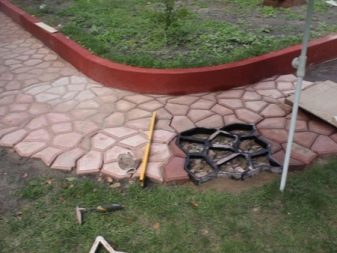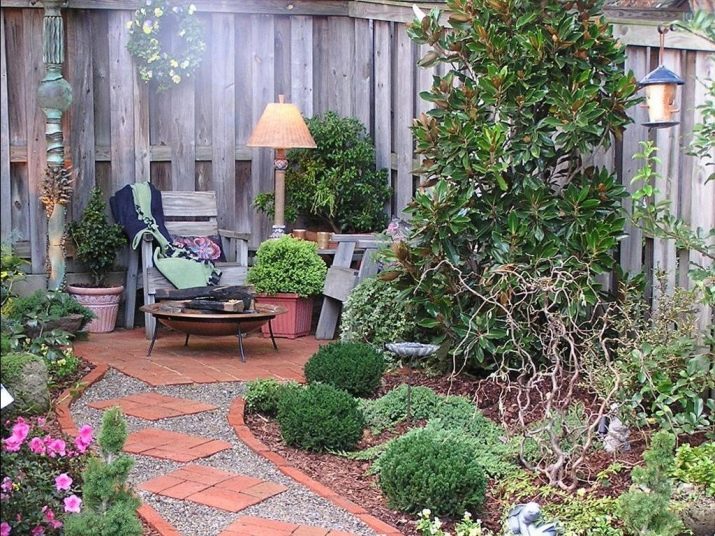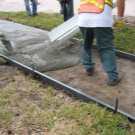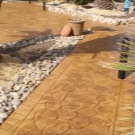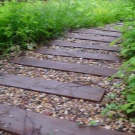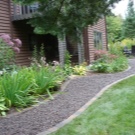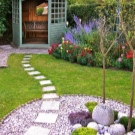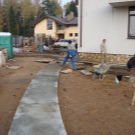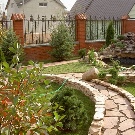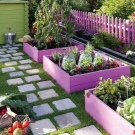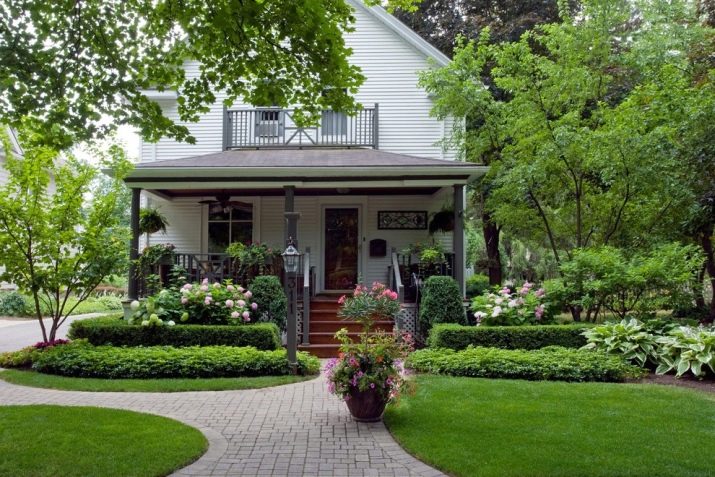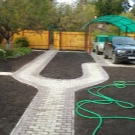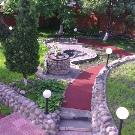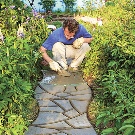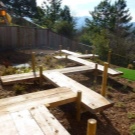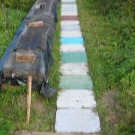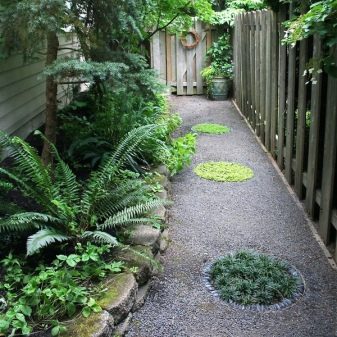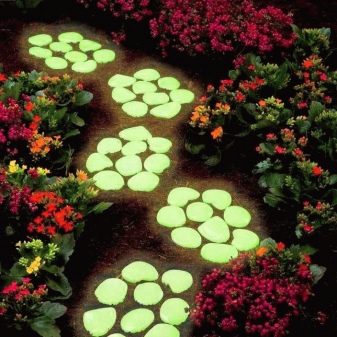Track design: beautiful examples of landscape design
The beauty of the suburban area is achieved through competent landscape design. One of its main elements are garden paths, which are not only decorative, but also utilitarian. Making tracks is considered the main direction in the improvement of private territory.
Special features
Asking what kind of tracks to choose and what material to make them, you should first of all figure out what the final purpose of the coating is. For your site, you can use one type that is suitable for both decorative and household purposes, and you can choose different types of paths for the entrance area, garden, recreation and garden.
The material should be selected based on the specifics of the site. If this is a large residential country house of brick or stone, then the paths can be laid out wide, overlapping with the facade. In the country you can get by narrow paths from the available materials.
When creating a territory planning project, it is important to take into account a number of factors that should be emphasized with the help of well-designed garden paths.
- The choice of the type of material, as well as the configuration of the roadway itself, depends on the features of the site’s topography. Subject to the presence of high hills, valleys or territory under the slope is to think about the steps and stairs.
- It is necessary that the transition network had a complete compositional appearance. To do this, all landscape elements - ponds, alpine slides, recreation area, entrance area, vegetable garden and outbuildings must be combined with each other into a single system.
- It is good if an interesting view of the elements of landscape design, small architectural forms, decor on the facade will be opened from the walkway.
- The roadbed should not break off, rest against a fence, ideally it has a closed system or leads to an architectural element - a bench, a statue, a pond or a fountain.
- You should not create a plan for a network of paths with forks, as well as cross paths with a large lawn planted with grass.
- The width of the pedestrian walkway should be at least 70 cm. Transitions in the economic zone are wider, as they should be sufficient for transporting cars and small agricultural machinery.
- The entrance area from the gate to the porch of the house is covered with a beautiful wear-resistant material due to the large operational load.
- On a large plot, you can pave wide paths that will diverge narrower; on a small plot, a network of tracks can be better organized around the perimeter and diagonally.
- The roadbed with a border looks hard, and also causes difficulties when mowing. It is best if its level coincides with the level of the ground.
- You should not choose slippery materials, because after the rain the paths will become traumatic.
- In order to prevent the formation of puddles on the surface, it is necessary to plan drainage using expanded clay or slopes during laying.
- The economic zone is better to provide direct transitions, and the garden - winding paths. So you can achieve convenience in the first zone and a romantic, mysterious atmosphere in the second.
- It is important to choose the type and material of transitions in harmony with the general design ideas presented in the territory. Pavilions, benches, fences, facade of the house, outbuildings and walkways - a single ensemble of a country site.
Types of masonry
Features and types of masonry largely depend on the selected material. The shape, size, color of the original material unit allow you to create a variety of patterns on the canvas. Natural stone with uneven edges, a rough surface will look as natural as possible, while bricks and paving slabs are reliable and utilitarian.
If you come creatively to the issue of paving garden paths, you can create combined solutions or variants from junk material. For example, large slabs of flat natural stone or artificial tiles are laid out along the plan of the lines of the walkway at a distance of a step from each other. The area around is covered with pebbles or rubble. This technique saves money on the purchase of expensive stone on a large scale, but protects shoes and feet from dirt and water after rain. In addition, these tracks look good.
With a more compact arrangement of wide plates, the gaps can be laid out with multi-colored gravel, forming interesting patterns.This roadbed looks elegant, can be used both in the garden and economic part of the territory.
Using only pebbles, you can lay out a whole monolithic Persian carpet. Such work is very laborious and laborious, but the result is worth it. It is not necessary to cover the entire site with such a “carpet”, you can limit yourself to a rest area or an entrance area, make special islands to accommodate benches, lay out the area next to the pond. The remaining transitions combine with large stone slabs.
Owners of a beautiful lawn can make the landscape design of their site as natural as possible, but at the same time avoid mud after rain. Place stones of large or small sizes in such a way that grass cover is pushed out between them. In places of high humidity even decorative moss can be diluted. Such a find looks very exotic.
Mix different textures, materials are very convenient, beautiful, and most importantly, profitable.
Remains of bricks after construction, river stones, pebbles, flat large stones, cobblestone - all this can be components of one path.Optional grass out of paving elements should be lawn. Ornamental low-growing flower plants can become part of the composition. It is unlikely that such a path can unite utility rooms or become the dignity of the entrance area, but lead to a secluded corner of the garden completely.
If after repair there are a lot of unused or broken tiles, this is an excellent reason to make tracks with a mosaic effect. Well, if the tile is colorful and variegated, then you can create amazing and bright carpets, which will enliven and ennoble the country plot, make it cozy. If the necessary amount of ceramic fragments is not, then it is better to make small tiles of concrete, which can be placed in the garden at a distance of a step from each other.
Popularity conquers terraced path. Smooth rows of wooden boards with a neat joint look very original. The tree is not so hot in the sun, like stone, concrete or asphalt paths, it is nice to walk barefoot in any weather. However, this option is not considered cheap.
Finished products, such as paving slabs or paving, suggest standard styling solutions. Creatively in this embodiment, you can only treat the choice of color tiles.Broader application in terms of laying has a brick. It can be laid out directly or with a shift, diagonally with respect to the main line, parquet method, in a circle, scaly method or Venetian masonry, as well as combined with other materials.
Easy, and most importantly, the budget type of laying - this path of rubble. No twisting turns, bizarre forms are terrible to such material. The path can be arbitrarily wide or narrow, harmoniously move into the elements of landscape design, for example, to become part of an alpine slide.
Very often craftsmen pave footpaths in summer houses with waste material. Plastic bottle caps, glass jar bottoms, rubber tires, log saws, pallets - everything can become a material for a road and path network. However, you should be prepared for the fact that such paths will not last long.
Design style
It is very important that the design of the walkway corresponds to the landscape design as a whole, and also overlaps with the facade of the house and utility rooms. At the same time, it is important that at the planning stage the lines of future transitions support the composition.
English
The Englishmen can rightly be considered the most rational in this regard. Gardens in the UK - the standard of rationalism and respect for all proportions. English tracks, as a rule, do not have straight lines. Curved curved paths correctly lead strollers to the most beautiful corners of the garden, while allowing them to enjoy the promenade and the best views.
The material for laying the paths is usually a brick or a natural flat stone. Elements are laid to each other butt-to-butt joint, the concrete mixture fills the gaps. Very often in English gardens paths on both sides gracefully surround a flower bed or an alpine slide.
Also a classic example of style is the presence of a labyrinth with a hedge and a green lawn on the backyard territory. It is important to beat such elements with the help of transitions.
Regular
Gardens of this type are characterized by complete symmetry, usually have a special decorative element in the center, which serves as the main attraction - a fountain, a statue, a topiarnoy tree. It should be noted that this style is applicable to areas with a large area.
Garden paths in the regular style are the main guides.which line the whole plot with straight, clear lines, setting geometry and perfect order. In the traditional understanding of the garden in the regular style does not have a lawn, and it seems that there is no land on such a plot. Strollers can enjoy perfectly trimmed hedges, representing the labyrinth, as well as small architectural forms - statues, fountains.
The network of tracks is an intersecting monolith. No blade of grass should break into the light. The material is paved stone, pebble, as modern options - paving tiles, brick.
Japanese
Japanese-style garden paths have various modifications; natural materials, such as large flat stones, pebbles, and wood, are best suited to create them. The tropic-road network, as a rule, has a winding shape, it can be interspersed with small platforms with flower beds, a rock garden or alpine slides in the appropriate design.
Most often, the tracks in the Oriental style have a combined look. This idea is perfectly supported by huge boulders that can be placed on both sides of the simplest pebble path.You can also include elements of the flooring of the tree.
If there is a pond on the plot, the path can be laid through such a reservoir. This is a purely Japanese reception, it looks very impressive and atmospheric. In this case, suitable large flat stones or wooden flooring.
Country music
Rustic style involves the use of natural materials to create garden paths. For this, wood cuts, stone, pebbles, crushed stone are excellent. In the design of the road-path network, there should not be anything complicated and pretentious, it should be based on practicality. To create coziness on the site will help flower beds and decor of the objects of peasant life.
Modern directions
Small courtyards of urban private cottages, townhouses have caused the transition of high-tech style and minimalism from the interiors to the exterior. Small enclosed areas serve as an excellent basis for creating a fashionable and unusual garden next to the house.
At this site, materials with a pronounced artificial origin look best — these are large-sized porcelain stoneware plates, concrete, and modular elements.
There are options in which the lawn is completely absent, and the diversity of the landscape is achieved by combining materials, free-standing trees, undersized plants that grow, it seems, directly from concrete slabs, as well as decorative elements and small architectural forms. Thus, the road network stands in such yards as a whole monolith that covers the entire area.
But the presence of a lawn in such gardens does not look like usual. The road network in the usual sense is absent, the rolled lawn takes a strictly geometrical shape and is located directly on the track as a kind of flower bed.
Materials
It is very difficult to single out one universal material that would be suitable for any site. After all, the design of garden paths largely depends on the style of landscape design, facing material of a residential house, the size of the site, its length and width. In addition, an important criterion is wear resistance, performance, safety, ease of installation, the ability to make partial repairs.
The road and path network can be made of the following materials:
Paving slabs
The raw materials for the finished product are developed specifically, taking into account the possible influence of various aggressive environmental factors.Thus, the path paved with paving slabs is extremely wear-resistant, is not afraid of strong temperature drops, is moisture resistant, remains strong when the sun is scorching, does not emit harmful substances, is safe for human health.
Manufacturers of such products offer various forms of elements for laying tracks: brick, square, rhombus, hexagon, reel. In addition, a coloring pigment is added to the mixture, which also makes it possible to diversify the design of the transitions.
Tree
The tracks can be made of wood, which has undergone various processing methods. These include cross log logs or round timber, which are dug into the ground, ordinary planks laid out on the terrace principle, timber, homemade versions from pallets, bamboo stalks, and also special garden flooring.
Wood is a very whimsical material, a humid climate and temperature drops are capable of destroying it, mold can form on it, and the base to rot.
Therefore, already at the stage of installation, it is worthwhile to think over a good drainage system, process wooden elements with antiseptic and bitumen mastic, use metal supports, and raise the flooring itself a little above ground level. The final stage will be coating flooring varnish.
A natural stone
Particularly harmoniously and exquisitely in the garden look tracks paved with natural stone. This material is quite expensive, but there are options in which limestone can be organically combined with pebbles, thus creating unusual transitions and ensembles with flower beds or rock gardens. Also, the shell rock slabs look great if they are located within walking distance of each other, and sow lawn grass around. Thus, without violating the integrity of the lawn, you can pave the path to the architectural object or element of the decor.
Cobbled paths allow you to create interesting patterns or imitate the streets of the old city, mountain trails. It is noteworthy that it is natural stone that can be found in any garden design style.
Brick
By itself, a brick is not considered a cheap material for laying tracks on a plot, however, if unspent material remains after the construction of a house or other outbuildings, it is worth using it for paths in the garden.
In the presence of the usual silicate brick is to prepare for the fact that for a long time it will not last. Frequent changes in temperature, periodic freezing and thawing will make the track unusable.
There is a special variety - sidewalk clinker bricks.This type will last a long time, as it was created specifically for paving.
Concrete
The simplest, and most importantly, inexpensive and affordable material to create a road and path network. In minimalist designs or exteriors in high-tech style fit monolithic walkways and platforms, filled with a smooth, smooth concrete solution. For those who decorate their site in any other way, there are ways how to diversify gray ribbons of roads.
- You can apply special forms in which the mixture is poured. Thus, it is easy to imitate paving slabs or artificial stone of different breeds.
- Pigment can be mixed into the solution, which will give an unusual shade and revitalize the landscape.
- If you have pebbles or shells, you can also add them to the mix. They add texture and originality transitions.
- Thanks to the addition of mica, you can achieve a sparkling effect under your feet. Reflecting the sun's rays, the tracks will sparkle and please the eye.
- From scrap materials you can make stamps that are imprinted into a semi-liquid solution, thus leaving a beautiful embossed imprint. These stamps can serve as tree leaves or grass.The main thing is that the blank has a pronounced texture.
- On the surface of the concrete, fragments of broken ceramic tiles and tiles can be laid out. The pattern can be arbitrary.
- Slabs of concrete can be made from which, after hardening, folded garden pedestrian crossings. Plates can be round, square, oval.
Gravel
Gravel paths are an easy way to create a road and path network in your area. Moreover, the material itself is not expensive. Creating straight strict lines, it is possible to support the direction of high-tech and minimalism in the design of the exterior. Curved winding paths will undoubtedly lead to a Japanese traditional rock garden or rockeries. Symmetrical paths with topiary live hedges on both sides will become a decoration of the regular style in the garden. In addition, gravel is perfectly combined with other materials for paving - natural and artificial stone, cobblestone, concrete slabs, wood.
However, this material has its drawbacks. Coarse gravel has sharp edges that can damage bare feet, while small grains easily spread around the area on the shoe.In addition, after the rain, the mud from the boots will certainly linger between the stones, then it is not easy to clean it out.
Due to the variety of materials, the zoning effect on the site can be applied.
To pave the entrance parade area with more expensive and noble natural flat stone, pour concrete mix or pave the brick walkways, put flagstone in the garden at a distance of a step, or fill the paths with rubble. Such combinations will help to make a variety and save the budget without losing the beauty of the site.
Rubber mats or rolled rubber coatings
The tracks to the playground and the playground itself can be easily laid out with rubber mats. They prevent injuries from falling, not slippery, have mud-proof properties, water never accumulates on them, therefore, no frost appears. Rubber crumb plates can be paved paths of the entire suburban area. They come in different sizes and colors and have a low cost.
Do it yourself
Before proceeding with the laying of the material, it is necessary to draw up a plot of the site and draw a plan for future tracks.Based on the specifics of the terrain, the placement of a residential building, outbuildings, and the choice of material, a project is drawn up.
It is important to carry out all work on the conduct of communications on the site (water supply, sewage, electrical cable) before the registration of the tracks, then you will not have to open the ready-made roadway.
Layout
For simplicity, convenience and clarity, you can use a computer graphics editor and see the future result in 3D mode. But the scale project on a piece of paper will help determine how best to lay paths.
The first step is to schematically depict the house, other buildings, as well as small architectural forms to which the design of the approach is required. It is important to respect the scale and take into account all sizes.
The first tracks are marked with utilitarian value - from the gate to the entrance to the house, from the house to the outbuildings. It should be borne in mind that the most convenient routes are already trodden, they are traced by capital ones.
Further paths from the entrance area to recreation areas - a playground, a gazebo, benches, to the garden, as well as to the garden, if there is one.Lastly, one should be puzzled over how to organize a convenient approach to the water source, to some trees, flowerbeds, small architectural objects.
After that, you can make an estimate and calculate the approximate cost of the material and work in the case of hiring workers. When calculating the cost should take into account the width of the tracks. It must be determined at the planning stage.
The width of the walkway should be at least 70 cm, in which case it will be convenient to walk along it. However, some agricultural machinery has wider dimensions, which should also be considered. If the material for the walkway is brick, paving slabs or any other material with clear dimensions, the width of the walkway will obey these parameters.
On-site planning can begin with a schematic representation of the paths using lime. This technique will allow you to understand how the planned width of the track corresponds to the needs.
The next step will finally and clearly set the boundaries of the future road-path network. Pegs are driven in along the perimeter of the walkway, onto which the cord is pulled. The preparation phase of the foundation begins.
Preparation of the base
Usually, before proceeding with the installation and construction work, the top layer of soil is removed from those areas where the path will lie. Thus, the future path will not greatly rise above the ground level and will allow you to create a harmonious landscape design, and also will not interfere with mowing.
Torn area should be done a little wider, since the path itself is better to protect the border of stone or concrete. This will give the durability of the structure, keep its presentable appearance for a long time.
The preparatory work is very important, they can not be neglected.
Save the track in the form in which it was conceived, it is possible only with strict observance of all the rules of technology, which are as follows:
- The layer of soil that needs to be removed is approximately 15-20 cm. Be sure to check the ruler so that this value is the same throughout the track.
- Planks are installed along the perimeter, which in this case will serve as formwork. Boards should hold tightly, not hang out. To do this, they can be sprinkled with sand, nailed to hammered wooden stakes.
- In the case of installation of a curb made of concrete formwork is not required. In order to install them smoothly, use the building level. Fix the border with reinforcing rods, driving them deep into the ground.
- The bottom of the pit is filled with a mixture of rubble, gravel, sand or cement and rammed. The layer thickness is 5-10 cm. To save as a drainage, you can also use construction debris - fragments of brick, slate, crushed gas silicate slabs, and so on. The main thing is that then there was an opportunity to well tamp the layer, otherwise the base may sink with time.
- The next layer is geotextiles. This material can be found on sale in rolls. It keeps the shape of the upper sand cushion, and also does not allow the roots of plants to germinate and destroy the garden path.
- The sand is poured in such a way that its layer is slightly above the level of the natural soil. If sand is required somewhere, then this must be done, since it is important that the surface becomes almost perfectly flat.
- To make a rule, you need a board with perfectly even and smooth ends. The length of the board is 20 cm longer than the width of the track.The bottom corners are cut at a right angle of 10 cm on each side to a depth equal to the thickness of the finishing material (brick, stone, tile). The formwork or curb will serve as an emphasis for the rule; a reduced end will help to level the surface of the sand pad without cavities or hillocks at the desired depth.
When the basis for the future path is ready, you can proceed to the installation of a decorative coating. The type of material depends on the process of performing the work.
For laying bricks you will need a mallet with a rubber drummer, which will not damage the material. Installation of elements begins from the curb. The brick is placed on the edge and driven into the sand at half the width. If the track option does not provide for a curb, dilute the concrete-cement mortar and fasten the bricks to each other. While the mixture solidifies, the reinforcing pins or bedding and tamping of rubble will help to hold the structure securely.
When the side bricks will be able to hold the main composition, you should proceed to its layout according to the scheme. In this case, it does not matter which side the decorative material will be laid - edge or on the wide side.
It is necessary to continue to hammer each brick on the extreme level with a rubber hammer. So you can achieve the stability of the coating. For better coupling, the elements can be glued together with a special resistant adhesive for exterior work. This technique also does not allow the grass to sprout. It is important that the glue is not visible from the outside and does not clog the gap to the full depth, so the flow will be economical.
Then the gaps between the bricks are filled with sand, and with the help of a garden brush they are tightly clogged. Surplus can be swept away. At the last stage, the formwork is dismantled, and curb edges are poured with rubble, which are properly tamped. From above the cloth can be processed the getting primer and a varnish coat.
Similarly, laying paving slabs.
For the path of country style of logs requires dried wood of any solid breed. It is important that all cuts be as smooth as possible, so they will have to be cut out with the utmost care. The surface is ground and rubbed.
The diameter of the logs may be different, but the more options there are, the better. So get a dense styling without large gaps.The height should be twice the depth of the pit without a sand pillow. Thus, hemp should rise 10-30 cm above the ground surface.
A mandatory step in the preparation of the material is the treatment of the lower part of the logs with an antiseptic, which will prevent the occurrence of fungus and mold, as well as slow the processes of decay.
It is necessary to pour an antiseptic into the container so that the log installed there will rise 5-10 cm above the surface. Leave for 3-4 minutes. The top is brushed. You need to do this with each element, and then let it dry thoroughly.
Processing "Kuzbass lacquer" is similar, but requires only a few seconds of dipping, besides, the top can not be processed, since this type of protective coating is unstable to UV rays. But part of the closed from the sun, it is perfectly protect from rotting. Varnish can be replaced by heated tar.
Since roundwood is difficult to hammer with a hammer into the sand due to its diameter, a sand cushion is formed together with the layout of the logs.
When hemp is processed and ready, you should proceed to the installation:
- around the perimeter of the pit poured a small amount of sand;
- roundwood matched to the diameter tightly mounted on the sand;
- between the stumps it is filled up to the level of the ground surface;
- after installing the first row, you can proceed to the second and so on until the end of the track.
In order to pave in a similar way the entire plot, you will need a lot of wood. This is not always possible, but the village path can be combined from wooden logs and rubble. For this, a curb of round timber is formed, and the center is filled with small pebbles.
In this case, the algorithm of actions will look as follows:
- Along the edge of the marked path with a prepared base and a sandy pillow, hemp is driven in. They can rise above the ground level, and can go with it flush, it all depends on the desire and style. And in some places, the height can be artistically different.
- The central part of the walkway is covered with geotextile so that the edges at the level of the logs tilt upwards by 8-10 cm. In this case, this material should be spread out after the layer of sand, and not before it. Such a technique will not allow bulk crushed stone to mix with a sandy pad over time.
- Gravel or rubble is poured in from above and leveled with a rake on the ground level.
Mosaic of river stone is also a great option for the design of trails on the site. Such details are very small, so before laying a beautiful track will have to be patient. Altai stone is suitable for such a path. It is smooth, it is round and oval in shape, has shades from light gray to dark gray.
First of all, you should sort the elements by size and color, this will help you decide on the pattern of laying, as well as speed up the layout process. You will also need a rubber hammer, water, a sponge and level.
For convenience, the layout of the figure, you can throw a “drawing” lime directly on the surface of the already prepared sand pillow. You can also divide the amount of work into square sections, which will include an identical pattern report. This will achieve symmetry, as well as help to correctly calculate the amount of material.
After the preparatory work, you can proceed to installation:
- Dilute a thick cement mixture.
- A solution is applied over the outlined square sections, and a pattern of a river stone is placed tightly on top of it with an edge, which is recessed by about half.If the pattern is a popular curl, the rows are stacked along these curls, moving from the edge to the center. By analogy, other patterns are created. It is important to work quickly so that the cement mixture does not have time to dry.
- The river stone can be laid not only with an edge, some fragments, especially large round stones, look great flat. The main thing is that the gaps between the elements were minimal.
- After the solution is “grabbed,” you can level the elements with a mallet, which are greatly elevated.
- Constantly it is necessary to control the level of the track so that there are no height differences.
- Each paved area is watered. Such a procedure will wash away the cement mixture that has hit the surface and improve the material adhesion.
There is another option for laying river stone. In the second case, the cement mixture is not used, however, it becomes necessary to install a curb or formwork, install additional transverse partitions.
In this case, the mosaic is also stacked parts. And for each part there is a necessary formwork, which is removed only after the surface has been compacted.
Paving technology looks like this:
- A curb is installed on the finished base without a sand pillow, as well as temporary wooden partitions that break the future path into sections.
- Gradually, the area is covered with sand and leveled by the rule. The cut corner of the rule should be 2-3 cm deep, the free edges of the river stone will look exactly so.
- Moisten the surface of the sand with a spray bottle.
- Directly to the surface of the sand pillow, you can apply the future pattern with a thin line.
- According to the planned scheme, to make a mosaic laying, deepening the stones in the sand with tapping movements of the mallet.
- After laying out one section, once again walk the mallet over the entire surface of the picture.
- Pour dry sand or sand-cement mixture on top, sweep the area with a brush, properly fill the gaps, sweep away any excess.
- Using a spray bottle, thoroughly moisten the resulting pattern.
- When the mixture dries (after 2 hours), repeat the powder of dry sand or mixture, once again moisten the area.
- When the mixture is completely dry, the surface of the river stone mosaic is rinsed with a sponge.
- To make the path harder, it is moistened with water for a week.
- Not bad cover the track in case of rain foam or any other material. So you can avoid leaching still immature mixture.
- The formwork is removed in a week, the edges of the path are necessarily reinforced with stones or bricks.
When creating a concrete mix path, all the preparatory work is carried out according to standard technology - drainage is compacted in layers in the trench, the geofabric is stretched, the sand cushion is prepared and leveled using the rule.
Next on the cushion poured gravel, well compacted. For structural strength, a reinforcing grid should be installed.
For a classically flat concrete surface, the technology is simple:
- diluted cement-concrete mixture;
- the surface of the walkway is filled with a mixture flush with the border of the formwork, leveled by the rule
- roadbed can be strengthened with ironing. Dry cement is poured onto a wet surface with a thin layer and rubbed into the surface;
- the solution dries for 5-7 days.
There are special forms that allow you to simulate a path made of stone. To create similar transitions on your site, you must perform the following manipulations:
- pour coarse thick cement half the depth to the edge of the formwork, wait for the material to “grab” (a few hours);
- dilute the liquid portion of the mixture;
- set the form on the dried base, top with a liquid solution. The form can be removed only after complete drying of the cement in 3-5 days.
The process of creating such a track is not fast, given that the standard form sizes are only 40 cm. But the price of such products is low, so several forms can be purchased at once, this will speed up the process.
Professional Tips
So that the path would serve for a long time and please the eye, Simple rules should be followed during material selection and installation:
- As the material should be used products that are designed for paving paths. They have moisture resistant properties, they are not afraid of temperature changes.
- By mounting the track above the level of the ground surface, it is possible to avoid “acidification” of the upper decorative material. Excess moisture from rain and melting snow will drain into the ground and be absorbed by the earth.
- Strongly to rise above the ground, the path also should not, it can be traumatic, besides mowing the lawn near the high curb will be inconvenient.
- It is important to take care of good drainage.It is precisely because of this stage in the preparation of the foundation that it is possible to ensure that the road and trail network will not require repair for a long time.
- The track must have a bias left or right. So the water from it will drain into the ground.
- One should not neglect the proven technology for years when laying the roadway - each stage is very important, significant and fulfills its function.
- Regardless of the choice of material should not abandon the curb. It strengthens the structure and affects its durability.
Beautiful examples and options
There are a lot of ideas for creating an original and unusual landscape design of a summer cottage, the main thing is that the end result should be beautiful and harmonious. Competently planned and executed road-path network is able to give a harmonious look to the entire backyard zone.
- In a small area, the tracks that are laid out along the perimeter along the fence and flower beds look best. This solves two problems at once. Firstly, the space visually increases, and secondly, there is an opportunity even to walk a little on a small area.
- Directly in the garden you can pave a zigzag path.Strolling among trees and bushes, after each new turn, a new object of landscape art or an unusual small architectural form appears before the gaze.
- Sometimes the courtyard is so small that the garden path can also become part of a flower bed. At such sites at the end of the path you can install a wicket model. This creates the feeling that the territory does not end, that it is much more. The visual effect is sure to work for all guests.
- It is very important to think about lighting the garden paths. If the entrance, front area is better to provide the classic versions of lighting devices - low and high lanterns, then in the garden you can organize an unusual and mysterious atmosphere with the help of glowing stones.
How to make tracks in the country, see the video below.
